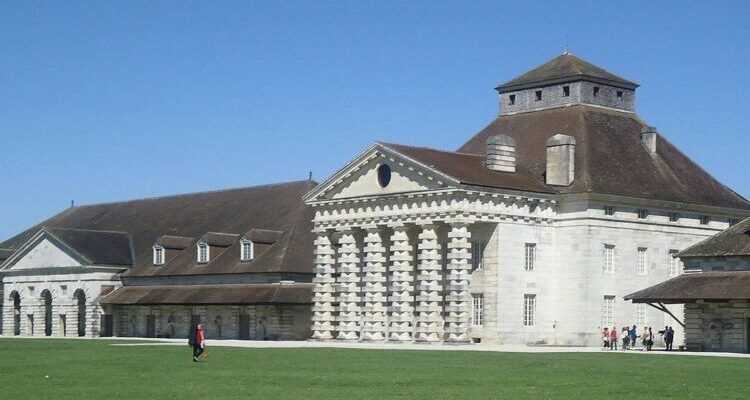Louis XV's industrial dream
In the 18th century, salt was a precious commodity and a state monopoly: the tax levied on this white gold, the salt tax, represented more than half of royal income. Louis XV therefore instructed Claude-Nicolas Ledoux, visionary architect, to imagine a modern saltworks near the Chaux forest, a wooden reservoir used for cooking brine, derived from Salins-les-Bains by a pipeline. It was created in 1779. Its architecture, which is distinguished by a semi-circular shape following the course of the sun, includes eleven buildings. The director's house is at the center of the composition, between the production spaces called berne – where water is "cooked" at 330 grams of salt per liter – and opposite the workers' homes, which she measures with her oculus. . Behind the Doric columns of the peristyle flanking the guard building, there is an artificial cave, surrounded by sources carved on the facade. The whole illustrates the strength of the underground world and the light of the place.
Amazing columns
To mark the status of the director, representative of the king, Ledoux built his home in the center of the diameter of 370 meters. At the front of this Palladian (neo-Roman) villa surmounted by a lantern, the columns of the pediment consist of a stack of round and square stones offering a subtle play of light and shade. "Only a fit of delirium can explain these fantastic assemblages," criticized a contemporary of the architect. The former administrative offices now house the permanent exhibition Salt Tales; the sheds, in the basement, that devoted to the invention of world heritage. As for the monumental staircase, then extended by an altar, one must imagine that it led to the chapel, whose nave extended to the peristyle.
From the golden age to closing
In the bernes, workshops 80 meters long and 18 meters high where the brine was heated in four stoves at a heat of 50 ° C, we relive the activity of the saunerie thanks to touch pads that restore the atmosphere. In 1895, the saline closed its doors, technologically outdated. Abandonment, fire and voluntary blasting ruined a whole part of the buildings. Until the Doubs department acquired it in 1927, the start of a long restoration.
A second youth
From before the war, the daring reinforced concrete framework of the bernes was classified as a historical monument. In 1941, the saltworks became an internment camp for Gypsies. In the 1960s, it opened up to art, culture, science and education. In 1982, it became the first industrial architecture listed as a World Heritage Site by Unesco. The cooperage now houses the Ledoux museum, the only one in Europe dedicated to an architect. And a hotel allows you to stay in the site.
A hot air balloon ride
To appreciate the perfect saline hemisphere, your best bet is to gain height. A nearby hot-air balloon club offers flights, in the early morning or at dusk. The hot-air balloon, a contemporary invention of the saltworks!
ventsdufutur.fr
Read also :
⋙ Jura: zoom on the Grande Saline
⋙ Salt: why you should reduce your consumption without completely excluding it
⋙ 10 tips for eating less salt
Article published in the issue Femme Actuelle Jeux Régions n ° 22 December-January 2021
